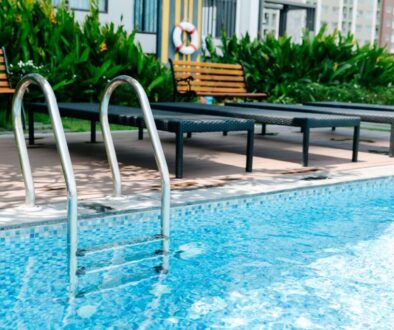How to Create a Standard Operating Procedure for Route Days
Creating a Standard Operating Procedure (SOP) for route days is pivotal in ensuring that your pool service business operates smoothly and efficiently. This blog post will guide you through the process, from understanding the importance of SOPs to implementing them effectively in your operations. Whether you are a seasoned pool service owner or are just starting, establishing clear and concise SOPs can significantly enhance productivity, customer satisfaction, and overall business performance.
Introduction
The pool maintenance industry continues to grow, with more entrepreneurs entering the market every day. As competition increases, the need for effective operational strategies becomes essential. A Standard Operating Procedure for route days provides a structured approach to how your team carries out their daily tasks while ensuring consistency and efficiency. In this article, we will explore the key elements of an SOP, the steps to create one, and the benefits of having a well-documented procedure.
Understanding the Importance of an SOP
- A Standard Operating Procedure (SOP) is a set of written instructions that outline the steps necessary to complete a specific task. In the context of a pool service business, an SOP for route days can define everything from customer interactions to service protocols, ensuring that every team member is on the same page.
- According to a study by the American Society for Quality, companies that implement standard operating procedures can increase productivity by up to 15%. By clearly documenting processes, you minimize errors, enhance training, and improve overall service delivery.
- Consider the case of a pool service provider in Florida who adopted SOPs for their route days. They reported a reduction in service delivery time and an increase in customer satisfaction ratings, leading to more referrals and repeat business.
Defining Your SOP Framework
- Before you dive into writing your SOP, it’s essential to define the framework. What specific tasks or processes will you include? Common areas for an SOP in pool service routes include scheduling, customer communication, service protocols, and quality control measures.
- Involve your team in this process. Gather input from technicians, customer service representatives, and management to ensure that the SOP reflects the realities of daily operations. This collaboration fosters a sense of ownership and can lead to a more comprehensive and effective document.
- Use a consistent format for your SOP. Each section should be clearly labeled, such as “Objective,” “Scope,” “Responsibilities,” and “Procedure.” This helps team members easily navigate and understand the document.
Writing the SOP
- Start with the objective of the SOP. What is the purpose of this document? For example, “The objective of this SOP is to outline the daily route procedures for pool service technicians to ensure consistent service delivery.”
- Next, define the scope. Specify which team members the SOP applies to and any limitations. This might include, “This SOP applies to all pool service technicians operating within the state of Florida.”
- List the responsibilities of each team member involved in the process. For instance, the technician may be responsible for conducting pre-service checks, while the customer service representative handles scheduling and communication.
- The procedure section should be the most detailed. Break down the tasks into clear, actionable steps. For example:
- Arrive at the first customer’s location by 8 AM.
- Conduct a pre-service inspection of the pool area.
- Communicate any issues with the customer before starting service.
- Complete the service checklist and document any findings in the system.
Implementing the SOP
- Once the SOP is written, it’s time for implementation. Share the document with your team and provide training sessions to ensure everyone understands their roles and responsibilities.
- Create a feedback loop where team members can report any issues or suggest improvements to the SOP. This not only promotes continuous improvement but also encourages employee engagement and accountability.
- Regularly review and update the SOP to reflect any changes in procedures, technology, or market conditions. An SOP is a living document that should evolve as your business grows.
Monitoring and Measuring Success
- After implementing the SOP, monitor its effectiveness. Set clear KPIs (Key Performance Indicators) to evaluate how well your team is following the procedures. These might include customer satisfaction scores, service completion times, or the number of service errors.
- For instance, if you notice that service completion times have decreased, you may need to revisit and refine certain steps in your SOP. Additionally, gather customer feedback regularly to assess whether the changes have positively impacted their experience.
- Consider utilizing software tools that can help automate aspects of the SOP, such as scheduling and customer communication. This can further streamline operations and reduce the burden on your team.
Best Practices for SOPs
- Keep your SOPs concise and easy to understand. Avoid jargon, and use straightforward language that all team members can comprehend.
- Include visuals where applicable. Flowcharts, diagrams, and checklists can enhance understanding and retention of information.
- Ensure that your SOPs are easily accessible. Consider creating a digital repository where team members can quickly refer to the documents as needed.
Expanding Your SOPs Beyond Route Days
- While this article focuses on route days, consider expanding your SOPs to cover other aspects of your pool service business. This could include:
- Customer onboarding procedures
- Handling customer complaints
- Maintenance and upkeep of equipment
- Having a comprehensive suite of SOPs will not only improve operational efficiency but also enhance your brand’s reputation as a trusted service provider.
The Role of Technology in SOP Implementation
- Leverage technology to streamline your SOP processes. Customer relationship management (CRM) systems can automate scheduling, notifications, and customer communication, ensuring that your team adheres to the SOP.
- For example, using a platform that integrates route optimization tools can help your technicians save time and fuel while ensuring that they complete service calls efficiently. This is crucial in enhancing profitability and customer satisfaction.
- Moreover, consider mobile applications that allow technicians to access the SOP on the go. This ensures that team members have the information they need at their fingertips, reducing the risk of errors.
Conclusion
Creating a Standard Operating Procedure for route days is an invaluable step in ensuring your pool service business operates effectively. By documenting clear processes, you not only enhance productivity but also improve customer satisfaction and employee morale. Remember, the goal of an SOP is not only to standardize tasks but also to empower your team to provide exceptional service consistently.
Take action today by starting to draft your SOP. Collaborate with your team, gather feedback, and implement the procedures that will drive your business forward. For further insights into pool service entrepreneurship or to explore available pool routes for sale, don’t hesitate to reach out. Your journey to streamlined operations begins now!



